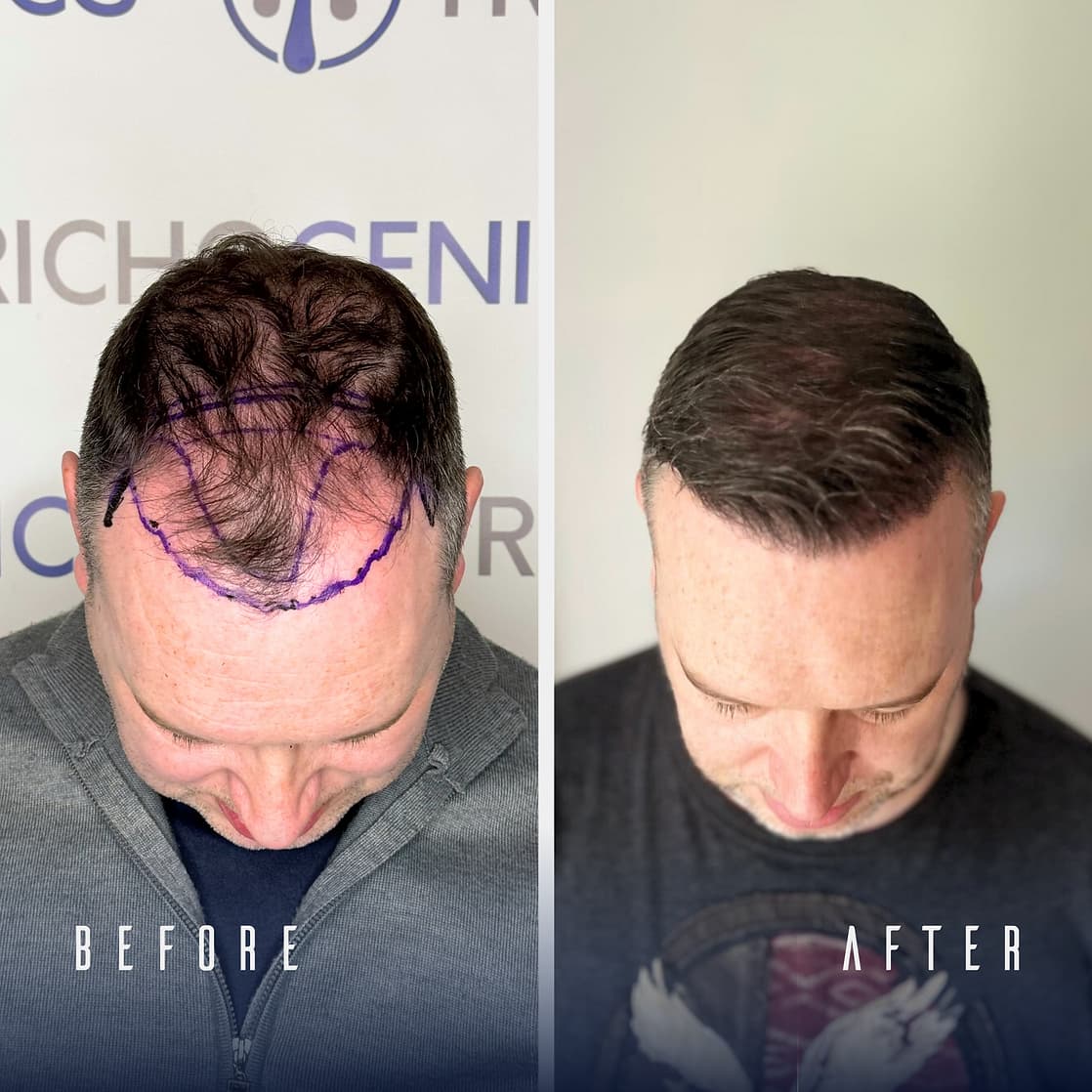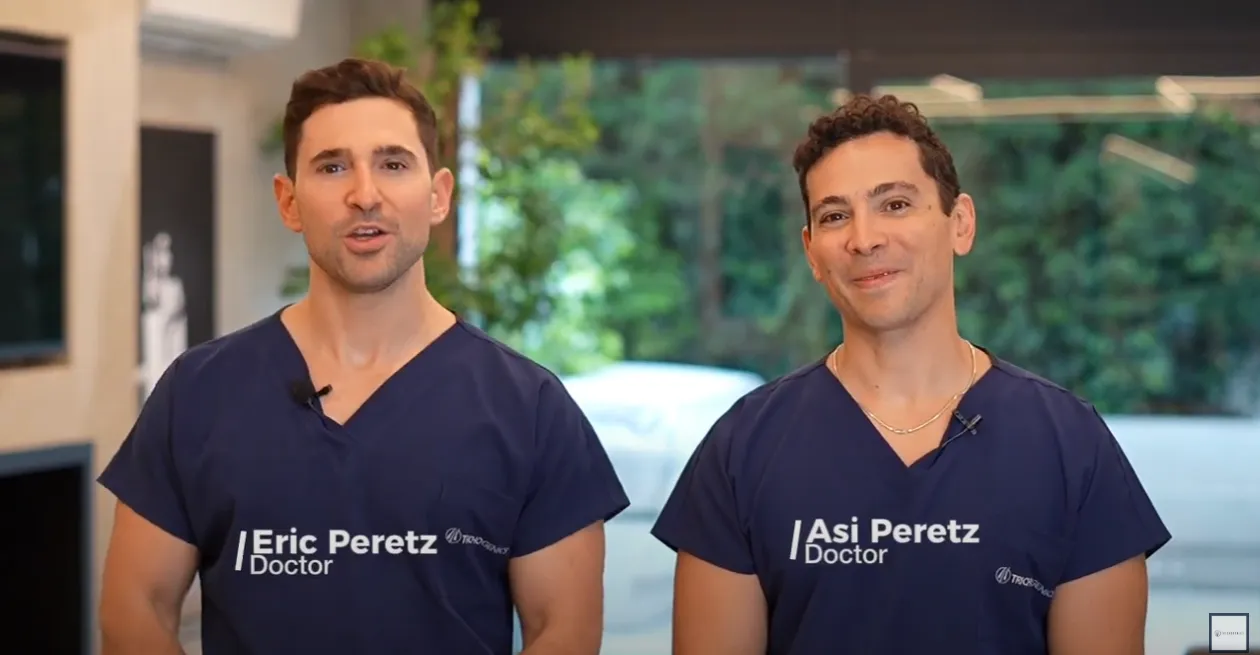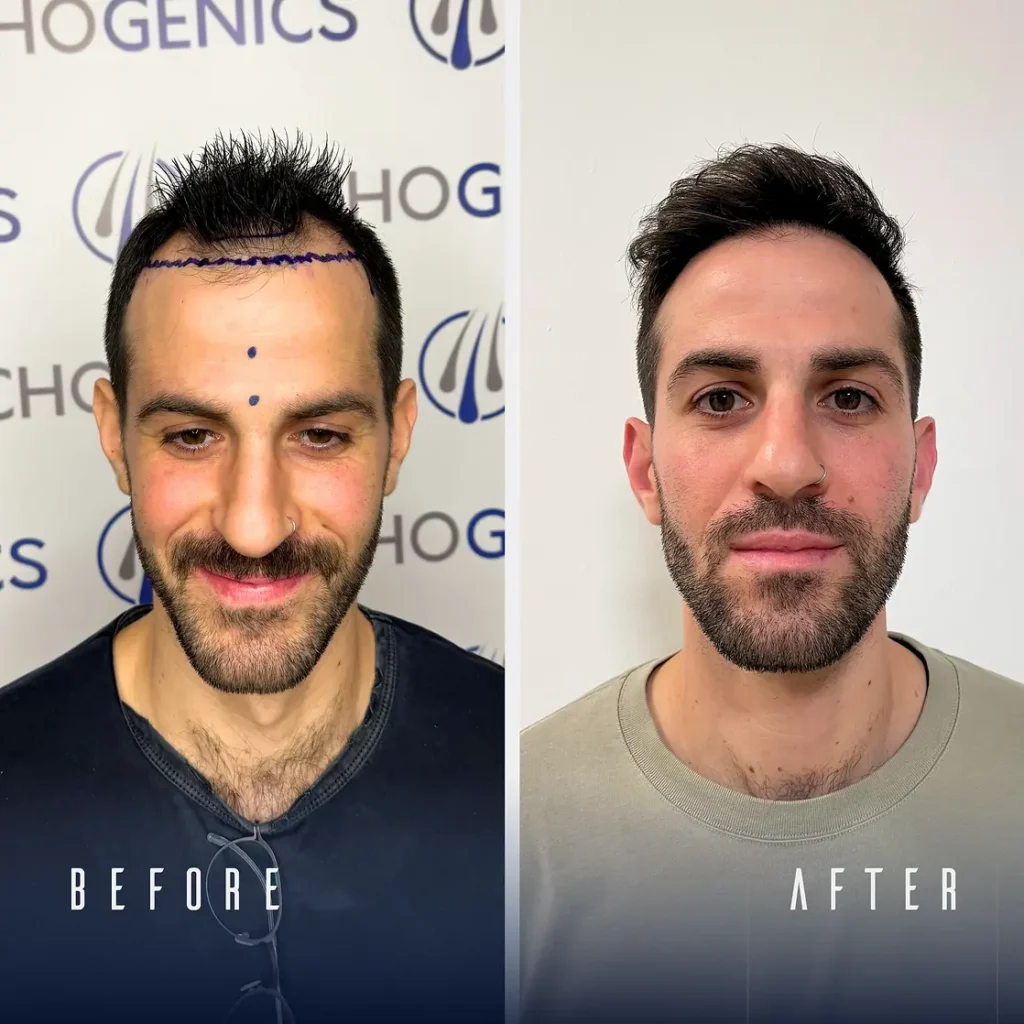Hair transplantation after 3 months is a key milestone for anyone considering a hair restoration journey. At Trichogenics, founded by Dr. Asi Peretz and Dr. Eric Peretz, patients receive expert, doctor-performed procedures in Greece and Israel.
Their advanced techniques and careful follow-up help patients track visible growth and recovery during this critical stage.
Key Takeaways
- At 3 months after hair transplant, early hair graft growth begins, but density remains thin and shedding from hair loss or shock loss is still normal.
- The hair growth cycle continues to progress at 3 months post hair transplant, with new hairs becoming stronger and darker over the next several months.
- Following proper care at hair transplant 3 months post op—including gentle washing, balanced nutrition, and doctor follow-ups—supports healthy graft development.
- Choosing a regulated clinic in Greece or Israel reduces the risks of poor results or complications compared to unregulated options in Turkey.
- Regular monitoring by an experienced hair transplant surgeon ensures transplanted hair follicles stay healthy and achieve natural final results.
3-Month Results and What to Expect
At three months after hair transplant surgery, the first new hairs begin to appear. The transplanted area may still look thin, but small hairs start breaking through the scalp.
This shows that the hair growth cycle is working. Some shedding can still happen because transplanted hair follicles rest before growing again. This is called shock loss and is a normal part of recovery.
During checkups, a hair transplant surgeon reviews the donor area and transplanted area to make sure each hair graft is healing well. Full hair transplant results are not ready yet.
Most patients see stronger growth between months five and twelve.
Hair Appearance and Growth Progress
The transplanted area often looks uneven at 3 months post hair transplant. Some hairs sprout early, while others take more time. This is normal because hair grows in cycles of shedding, resting, and active growth.
Patients often ask what hair should look like at this stage. At three months after hair transplant, hair is soft, thin, and lighter than natural hair. It will thicken and darken in the next few months.
The hair transplant recovery timeline shows that patience is key for healthy growth.
Photos and Before–After Examples

3 months after hair transplant photos help patients see what real progress looks like. Most density is still ahead.
The donor area, where follicular units were removed, usually heals with only slight redness. Newly transplanted hair is visible but not full.
At Trichogenics in Greece and Israel, doctors take photos during follow-ups. These images let patients compare their growth and share results with family or friends.
Month-by-Month Timeline to 3 Months
The healing process moves through clear stages:
- First week: Crusts form around transplanted hair follicles. Gentle washing begins after a few days.
- Weeks 2–4: Scabs fall off. Shock loss starts as newly transplanted hair sheds but follicles stay healthy.
- Month 2: Most transplanted hairs rest below the scalp. The head may look close to the pre-surgery state.
- Month 3: Early growth appears, but coverage stays thin.
This timeline shows that months post surgery do not bring final results. Thicker hair appears between months four and twelve.
Side Effects and Healing Process
By three months, most side effects are mild or gone. Redness and itching usually fade by the second month.
Some hair loss near the transplanted area can continue as part of shock loss. Pain is rare, but any swelling or unusual discharge should be reported.
Regular visits let the surgeon check the donor area and transplanted area. If you see heavy shedding or signs of infection, contact the clinic right away. At Trichogenics, doctors stay in touch to guide patients during recovery.
Caring for Transplanted Hair at 3 Months
Proper care helps each hair graft grow well. At this stage you can wash hair normally with mild shampoo. Use gentle washing to avoid harming grafts. Avoid tight hats, harsh chemicals, and heavy styling.
Healthy habits also matter. Eat foods rich in protein, iron, and vitamins. Sleep well, avoid smoking, and manage stress to improve blood flow. Doctors at Trichogenics recommend follow-up visits to track healing and guide care.
Care checklist for best results:
- Use a gentle shampoo and avoid hot water.
- Do not scratch or pick the transplanted area.
- Keep all follow-up visits with your doctor.
- Eat a balanced diet and stay hydrated.
Next Steps Toward Final Results
@trichogenics Hair transformation Journey. #trichogenics #hairtransplant #hairtransplantgreece #hairtransplantturkey #hairlosssolutions #hairtransplantation #hairlossremedy #hairlosssolutions #hairfallsolution #fyp
♬ original sound - Trichogenics
Final hair transplant results take time. By month six, hair becomes thicker and covers more of the scalp. By month twelve, most patients reach full density and can style hair normally. Each follicle grows at its own speed, so patience is important.
Dr. Asi Peretz highlights the value of regular follow-ups for long-term success. At Trichogenics, every hair transplant patient receives guidance until the final results are complete.
Why Choose Greece or Israel Over Turkey
Some people travel to Turkey for low-cost hair transplants, but safety is a serious concern. Turkey lacks strong medical rules, which raises the risk of unqualified operators and poor hygiene.
Many patients face infections or failed surgeries and later need costly fixes.
Choosing Trichogenics in Greece or Israel is safer. All surgeries are performed by doctors, including Dr. Asi Peretz and Dr. Eric Peretz, under European medical standards.
Clinics use advanced hair transplant procedures and provide clear recovery plans, regular checkups, and trusted care—benefits not guaranteed in Turkey.
Benefits of choosing Greece or Israel:
- Doctor-performed surgery only.
- Regulated clinics with high medical standards.
- Ongoing follow-up and personalized support.
Next Steps and Final Advice
Hair transplantation after 3 months is a key step in the journey to full hair restoration. At Trichogenics, patients in Greece and Israel benefit from expert care by Dr. Asi Peretz and Dr. Eric Peretz.
By avoiding unregulated clinics in Turkey and choosing a trusted team, patients can expect healthy growth, natural results, and lasting confidence.
Why Choose Trichogenics?

All procedures are performed only by doctors
The uniqueness of Trichogenics lies in its strict medical process—only certified doctors perform every transplant. No technicians or unqualified assistants are involved.
Choosing a clinic with proven experience in hair transplants can make all the difference.
Meet Dr. Asi and Dr. Eric Peretz
The two doctors leading Trichogenics—Dr. Asi Peretz and Dr. Eric Peretz—are recognized leaders in the field. Their extensive experience, attention to detail, and focus on natural results make Trichogenics the best choice.
Celebrity Hair Transplants
Who has undergone the procedure at Trichogenics? The answer is clear: a safe, professional clinic that delivers results that look great even under camera lights.
Contact Trichogenics today to schedule a personal consultation and get a clear, doctor-led plan for your hair restoration.



